Port examines Pierre Bonnard, one of the finest colourists of the 20th Century, following his newly opened Tate Modern exhibition
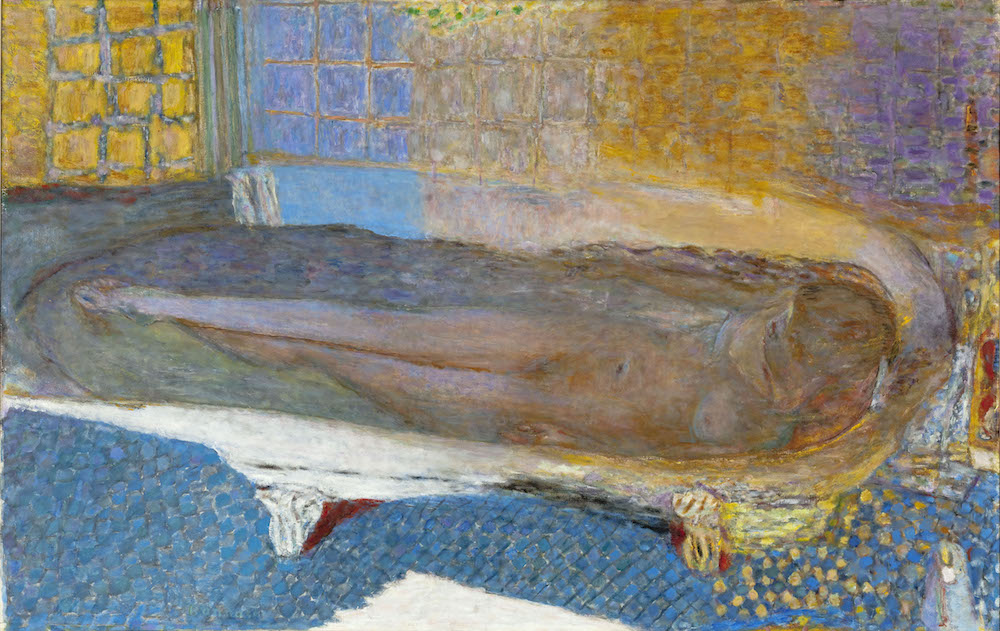
For the French Post-Impressionist Pierre Bonnard, colour wasn’t just a way to adorn a picture, it was a means to experience life itself. When he had mixed a new colour that was just right, he would revisit and retouch old work. Once, he persuaded his friend and fellow Symbolist Édouard Vuillard to distract a museum guard whilst he added his latest colour to a hung painting.
The Tate Modern’s newly opened exhibition of Bonnard’s work showcases a radiating spectrum, snapshots of domesticity and the natural world framed in experimental vantage points. Blurred Frenchmen celebrating the end of WWII. Luscious, tangled gardens spied from the kitchen window. Hesitating, stolen reflections in the bathroom mirror. These shimmering scenes are recreated intimately and imaginatively – their idiosyncrasy coming from the fact that Bonnard preferred to work from memory. His dream-like impressions act as snared, remembered moments in time – “giving the impression one has on entering a room: one sees everything and at the same time nothing.”.
Born in 1867, Bonnard was an independent figure whose best work often featured his wife, Marthe de Meligny, who featured in over 385 of his paintings. Travelling extensively though Europe and North Africa at the beginning of the 20th Century, he is credited as a founding member of the Post-Impressionist group Les Nabis, ‘prophets’ or ‘seers’, and counts Henri Matisse as one of his closest friends and passionate advocates.
Port talked to Tate curator Helen O Malley about Bonnard’s individual approach to perspective, colour and temporality.
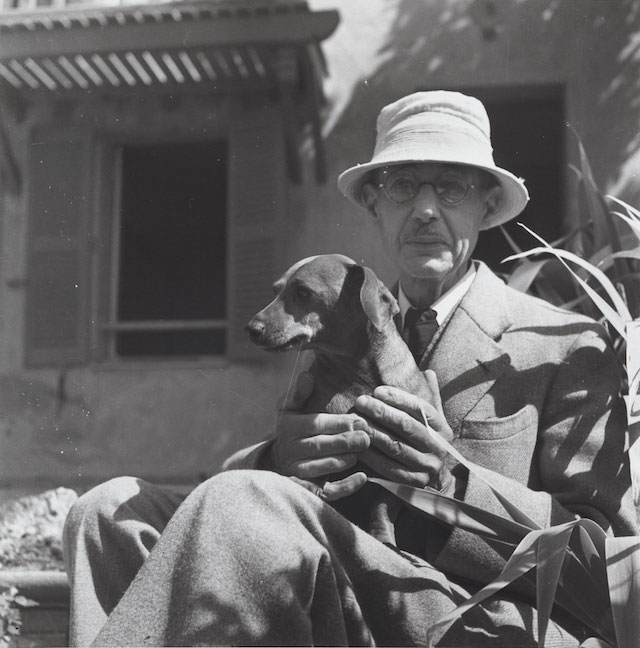
How did painting from memory liberate his subject matter?
Bonnard considered the object “a hindrance” to the painter. He found painting from life restrictive. In his opinion it caused the painter to become overly concerned with replicating the exact proportions or colour of an object. Bonnard preferred to work from memory in the studio and recorded the world around him in his sketchbook. He worked quickly, requiring just a few lines to capture a moving figure or rolling landscape on paper. He drew from these sketches following his return to the studio. They offered a point of departure for his paintings, which were expanded and enriched through memory.
Bonnard’s process of working from memory was key to the success of his paintings. It allowed him the flexibility to experiment with both colour and perspective, adapting his compositions in response to the emotional quality of the depicted scene. Although experience was taken as his starting point, the artist never allowed himself to be limited by his physical surroundings.
How did his artistic process enhance his use of colour?
Bonnard’s colour choices were guided by what he called “the first emotion”. He used colour as a tool to recreate or respond to the emotional quality of the scene. His unique handing of colour can be seen in paintings such as Boxer, 1931. In this self-portrait, the artist is confronted by his own reflection in the mirror. He is stripped of brush, palette and canvas, which indicates that the moment has been reconstructed rather than recorded. His raised fists suggest a frustration or struggle. The viewer is left to question the cause of his potential anxiety. This painting bears testament to Bonnard’s exquisite ability to use colour to capture his emotional state.
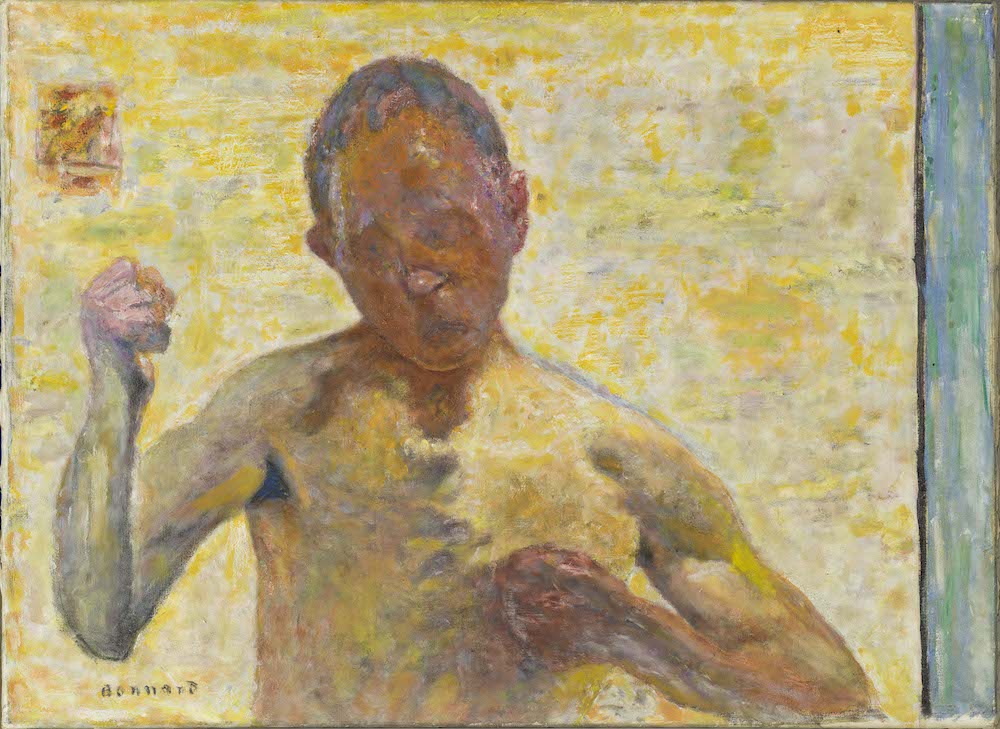
Why was his use of perspective, vantage point and framing so exciting at the beginning of the 20th Century, and continues to be so?
Once again, his experimental use of perspective, vantage point, and framing was closely linked to his process of working from memory. His experiments with the camera between 1900–1922 also had a significant impact on his painting practice. He took just over 200 photographs, helping Bonnard to move away from the conventional poses of artists’ models to depict figures more realistically. Often blurred and capturing a sense of immediacy, Bonnard’s photographs were used to refine his methods of observation and inspire his images, rather than simply acting as source material to copy directly.
The impact of his experiments with the camera can be seen in works such as Coffee, 1915. The table in this painting takes up the majority of the frame. A woman sits at the table, sipping a cup of coffee. The top of her head has been cropped from view. Similarly, the torso and arm of a second woman, dressed in blue, is seen reaching down towards a glass on the table, and it is unclear whether she is entering or leaving the room. This painting has the feeling of a snap shot, a passing moment captured in time. Bonnard carried this experimental approach to framing and composition throughout his work.
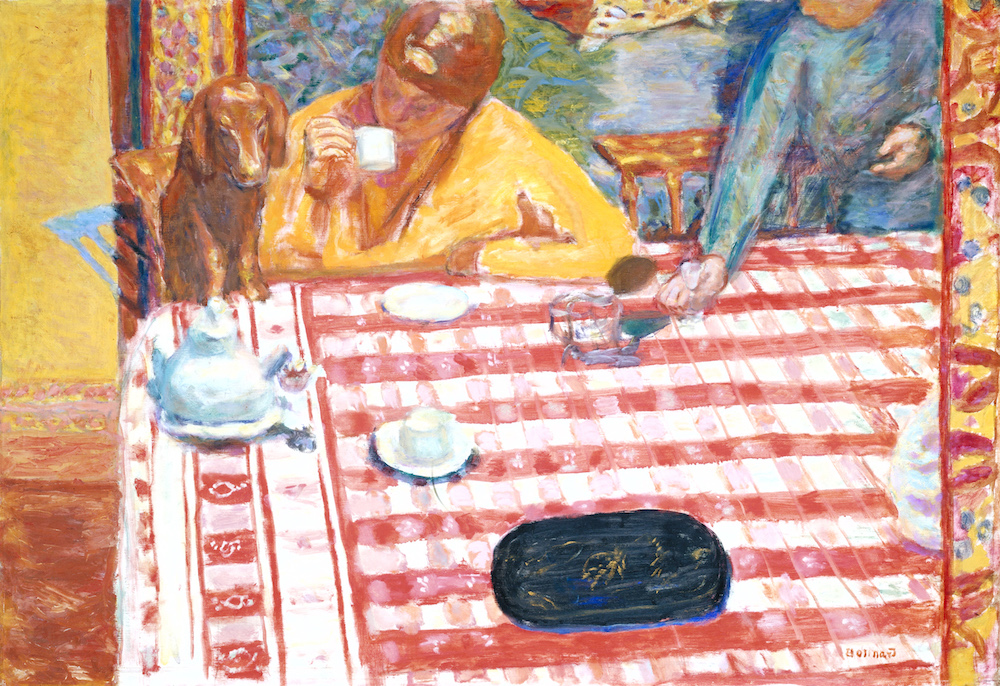
How does his work play with temporality?
Bonnard travelled extensively throughout France. He preferred to work on upstretched canvas. Rather than using an easel, he would pin his canvasses directly to the wall. This allowed him to roll up his canvasses and take them with him on his travels. He was often far removed from the original location or subject depicted in his work. As previously mentioned, Bonnard’s works do not simply transcribe what the artist saw. An initial moment of inspiration would be remembered, reflected upon, and reimagined as he composed his paintings in the studio. Rarely satisfied with his first effort, he often worked on each canvas over several months or even years.
One of the most extreme examples of this is Sunlit Terrace, 1939-46 which he painted over the course of the Second World War. The painting spans the passage of the war. The unusual colour palette suggests an alternative state of reality. The elongated canvas casts a sweeping view out into the world. Given the restrictions placed on movement during the war, the painting captures a sense of confinement but also the promise of freedom.
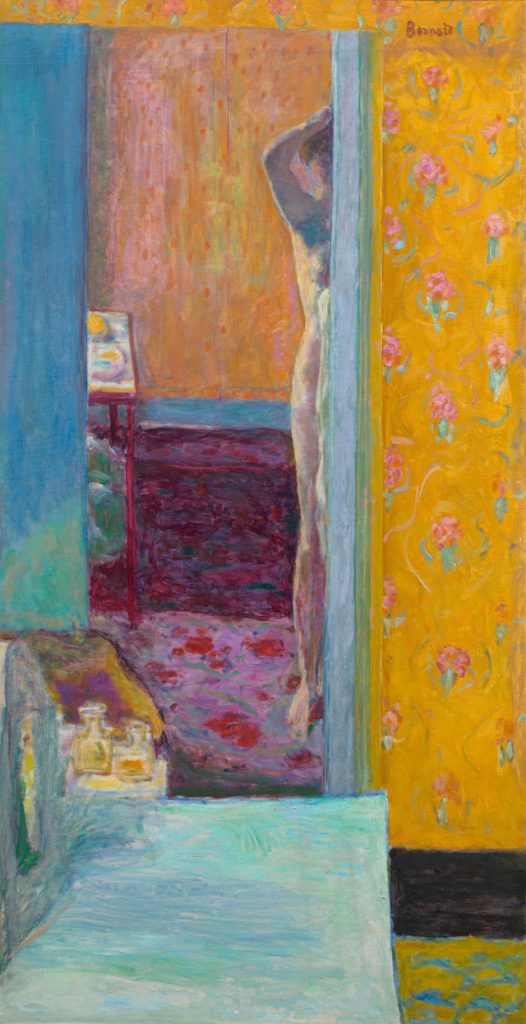
What role does the domestic, or intimacy, play in his work?
Bonnard’s relationship with his wife, Marthe de Méligny is at the core of his work. She was his primary muse, featuring in hundreds of his paintings. Bonnard recorded their everyday life together, cooking, reading, bathing. Although Bonnard and de Méligny remained together for over 50 years, their relationship was by no means simple. They went through various ups and downs. Bonnard captures the intimacy and melancholy of their relationship in paintings such as Nude in the bath, 1936. His experimental use of colour, once again, suggests a break with reality. He manages to create a space between what he is looking at and thinking about. It is a memory space, which offers a fascinating, if somewhat ambiguous insight, into the joy and strain at the heart of their complex relationship.
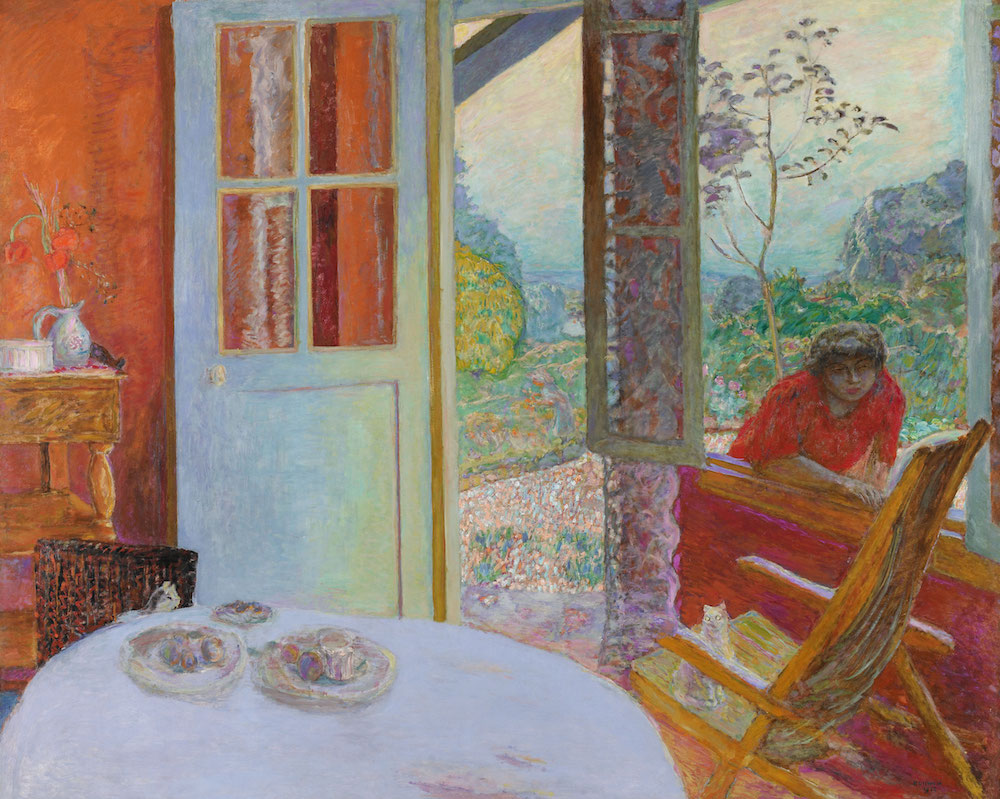
Does he have any recurring symbols?
Bonnard is best known for his depictions of domestic life; however, his subject matter is significantly more diverse. Exhibitions of his work are regularly organised thematically e.g. figurative works, still lives, etc. are grouped together. We’ve made the decision to adopt a chronological hang for The CC Land Exhibition: Pierre Bonnard: The Colour of Memory. This allows us to reveal the overlooked areas of his activities – from the city scenes and panoramic landscapes he painted during his frequent travels across France, to his practice of working simultaneously on different paintings side by side, and his response to the crises of both the First and Second World War. Presenting the works in the order in which they were made, generates new questions, allowing for a richer understanding of Bonnard’s life and practice.